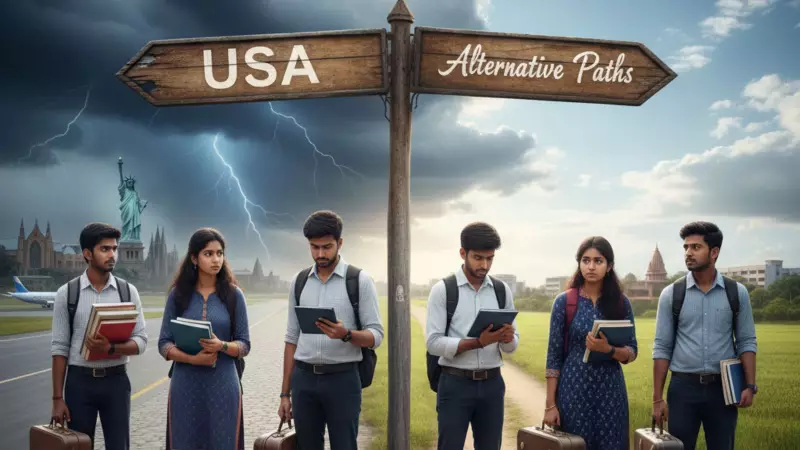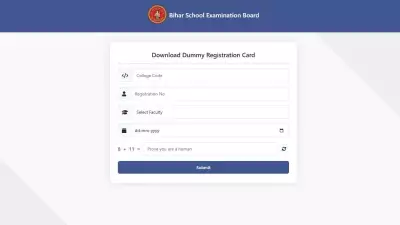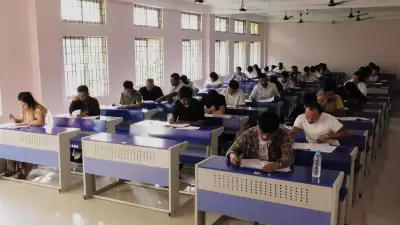
For generations, a US degree has been the ultimate aspiration for ambitious Indian students, particularly in STEM fields. It promised world-class education, cutting-edge research, and a pathway to a global career. However, that long-held dream is now facing a reality check. A combination of political shifts, economic pressures, and immigration uncertainties is forcing students and their families to ask a difficult question: is the American dream still worth the investment?
The Pillars of Uncertainty Shaking Student Confidence
The anxiety among prospective students is driven by several concrete factors. A resurgence of anti-immigration rhetoric in US politics has created a climate of unpredictability, leading to volatile visa outcomes, as seen with a recent visa pause. This political environment fuels the central fear for Indian students: the future of the Optional Practical Training (OPT) program.
OPT is the crucial 36-month work authorisation for STEM graduates that has long been the cornerstone of the return on investment for a US degree. It acts as the essential bridge from academia to employment, allowing students to gain practical experience, enhance employability, and begin repaying their often-substantial education loans. The discussion of several proposals that could alter or reduce this benefit signals instability and has intensified risk assessments for Indian families.
Beyond immigration policy, the job market itself presents hurdles. Hiring norms have tightened, with companies placing a higher focus on practical skills and industry-aligned portfolios. Indian students without prior work experience often face a steeper climb in securing roles during their OPT period. Compounding this is the financial strain. The actual cost of living—encompassing rent, transport, insurance, and daily expenses—frequently exceeds university estimates, pushing total expenses beyond what most families anticipate and complicating loan affordability.
Decoding the Enrollment Numbers: A Paradox of Growth
At first glance, data from the Open Doors Report 2025 seems positive, showing that Indian students remain the largest international student group in the US. However, the real story is in the fine print. While the overall number has grown, this increase is not driven by new students arriving on campus.
Fresh enrolments from India have actually reduced by 17% in Fall 2025. The growth is primarily fueled by a sharp rise in the number of students on OPT extensions. This is corroborated by a 30-40% decline in fresh F-1 visa issuances over the past two cycles. This means the headline growth is misleading; it reflects students already in the US extending their stay through OPT, potentially due to difficulties in securing full-time roles after graduation, rather than a healthy influx of new talent.
The Crucial Loan Decision: To Borrow or to Wait?
All these factors culminate in one of the most critical decisions for Indian families: whether to take a substantial education loan. The right choice demands a sober evaluation of risk, return, and financial resilience.
Families must now seriously consider the India-return scenario. For a student with a Rs 50 lakh loan, the typical EMI falls in the range of Rs 56,000 to Rs 62,000. If a graduate is forced to return to India unexpectedly and secures a job here, this EMI could consume a staggering 35–50% of their take-home pay, placing an immense burden on an early career.
Despite the challenges, a strong ROI still exists for some. Degrees in high-demand fields like computer science, AI, data science, and cybersecurity can lead to early-career salaries between $90,000 and $135,000. At this level, loan repayment is feasible within two to four years, provided the full 36-month STEM OPT period remains intact. However, for non-STEM degrees or other engineering disciplines, the repayment horizon can stretch to six to ten years.
Financial planning is now more critical than ever. Students must understand the true total cost, which for a two-year master’s at a mid-tier university can now reach Rs 92–95 lakh. Utilizing provisions like Section 80E of the Income Tax Act, which allows for a full deduction of education loan interest for eight years, can help reduce the effective borrowing cost.
A New, More Prepared Approach for 2026 and Beyond
The landscape is not entirely bleak. There are positive developments, such as clarifications that proposed H-1B reforms, including a new sponsor fee, do not apply to F-1 students transitioning to H-1B status. Furthermore, US universities, facing reduced international enrolments, are offering more scholarships, teaching assistantships, and fee waivers to attract strong candidates.
The United States continues to offer exceptional academic quality and strong career pathways. The American dream for Indian students is not dead, but it now demands a more grounded and prepared approach. For 2026, informed decision-making is paramount. Students must weigh risks honestly, model financial affordability under a worst-case India-return scenario, and invest heavily in upskilling, building project portfolios, and professional networking before they even set foot on American soil.





